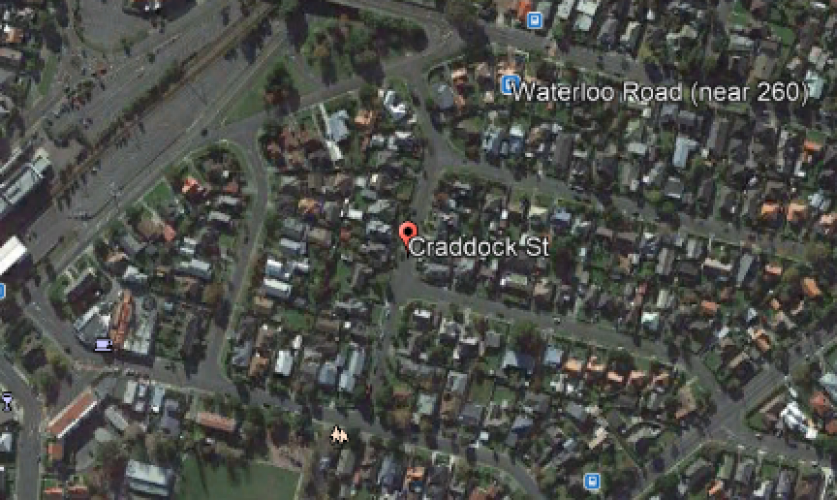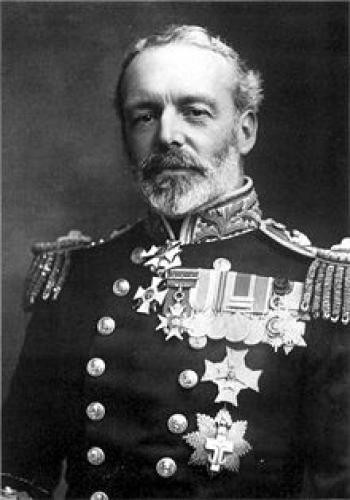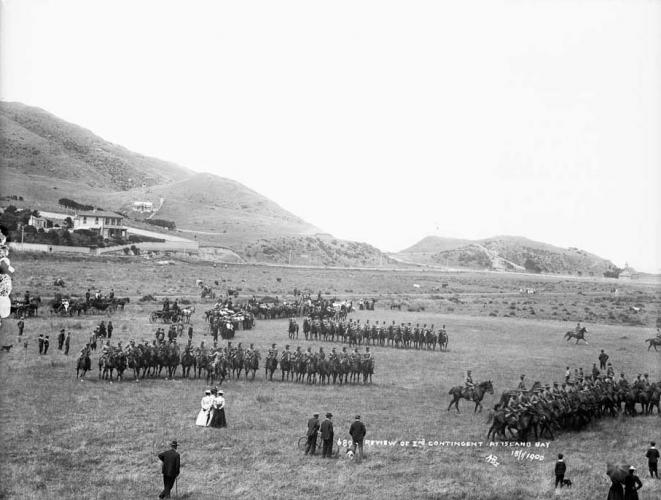159 Craddock Street, Waterloo, Lower Hutt, street scene 2018
Reason for the name
This Waterloo Lower Hutt Street was named in honour of Rear-Admiral Sir Christopher Craddock, British Navy, WW1. His brother Lieutenant-Colonel Montagu Craddock was commander of New Zealand's Second Contingent (1899 - 1901) in the South African war.
Craddock Street is a residential street within the suburb of Waterloo in Lower Hutt. Rear-Admiral Sir Christopher "Kit" George Francis Maurice Cradock KCVO CB SGM (2 July 1862 – 1 November 1914) was a British officer of the Royal Navy. He earned a reputation for great gallantry. He was killed during the Battle of Coronel, an engagement with the German navy off the coast of Chile in the early part of World War I.
In mid-December 1899, following a series of British defeats, Premier Richard Seddon proposed to the New Zealand House of Representatives that a second contingent should be raised. Unlike the First Contingent, the Second Contingent contained men from the regular military and civilians who were good riders and marksmen. These men were divided into two companies of mounted riflemen and a 39-man Hotchkiss machine-gun detachment. Training took place at Newtown Park in Wellington. Commanded by Major Montagu Cradock, the contingent embarked for southern Africa on 20 January 1900.
Author: Poppy Places Trust
Cradock was born at Hartforth, Richmond, North Yorkshire. He entered the Royal Navy in 1875, and saw action in the Mediterranean, serving with distinction. On 1 February 1900 he was appointed in command of the cruiser HMS Alacrity, which later that year was posted to China during the Boxer Rebellion. He commanded a mixture of British, German and Japanese sailors including Charles C. Dix during the capture of the Taku forts, and was promoted captain in April 1901 and received the Prussian Order of the Crown with swords as a result.
On 24 March 1902 he was posted to HMS Andromeda at the Mediterranean Station, where from June that year he served as flag captain to Rear-Admiral Sir Baldwin Wake Walker. Promoted to rear-admiral in 1910, he was involved in the sea rescue of the passengers and crew of the SS Delhi in December 1911, including Louise, Princess Royal (Daughter of King Edward VII and Queen Alexandra); her husband The Duke of Fife, and the king's grand-daughters. He was awarded the SGM and KCVO 28 February 1912; was knighted in an investiture at Buckingham Palace on 6 March 1912. In February 1913, he was given command of the North America and West Indies Station. From at least 21 until 26 April 1914, Cradock was at Veracruz on HMS Essex during the United States occupation of Veracruz.
With the start of the First World War, in August 1914, Cradock, commanding the 4th Squadron of the Royal Navy and stationed at Stanley, had to deal with Admiral Maximilian von Spee's East Asia Squadron, which had sailed from the Pacific Ocean and had made it way towards the western coast of South America. Cradock's fleet was significantly weaker than Spee's, consisting of mainly elderly vessels manned by largely inexperienced crews. However, the orders he received from the Admiralty were ambiguous, and although they were meant to make him concentrate on the old but well-armed battleship Canopus, Cradock interpreted them as instructing him to seek and engage the enemy forces; clarifying instructions were not issued until 3 November, by which time the battle had already been fought.
Cradock found Spee's force off Chile in the late afternoon of 1 November, and decided to engage, starting the Battle of Coronel. He tried to close the range to engage immediately, so that the enemy would have the setting sun in their eyes, but von Spee kept the range until dusk, when the British cruisers were silhouetted in the afterglow, while his ships were hidden by darkness. Heavily disadvantaged because of their awkward gun placements, and poorly trained crews, Cradock's flagship HMS Good Hope and HMS Monmouth were destroyed with the loss of all 1570 lives, including his own; the light cruiser Glasgow and the armed merchant cruiser Otranto managed to escape. This battle was the first defeat of the Royal Navy in a naval action in more than a hundred years.
Departing from Port Stanley he had left behind a letter to be forwarded to Admiral Hedworth Meux in the event of his death. In this he commented that he did not intend to suffer the fate of Rear-Admiral Ernest Troubridge, who in August had been court martialled for failing to engage the enemy despite the odds being severely against him, during the pursuit of the German warships Goeben and Breslau. The Governor of the Falklands and the Governor's aide both reported that Cradock had not expected to survive. A monument to Admiral Cradock was placed in York Minster. It is on the east side of the North Transept towards the Chapter House entrance. There is another monument to Cradock in Catherington churchyard, Hampshire. There is a monument and a stained glass window in Cradock's memory in his parish church at Gilling West. Having no known grave, he is commemorated by the Commonwealth War Graves Commission on Portsmouth Naval Memorial.
There is a neighbourhood, near the Norfolk Naval Shipyard in Portsmouth, Virginia, named after him.







